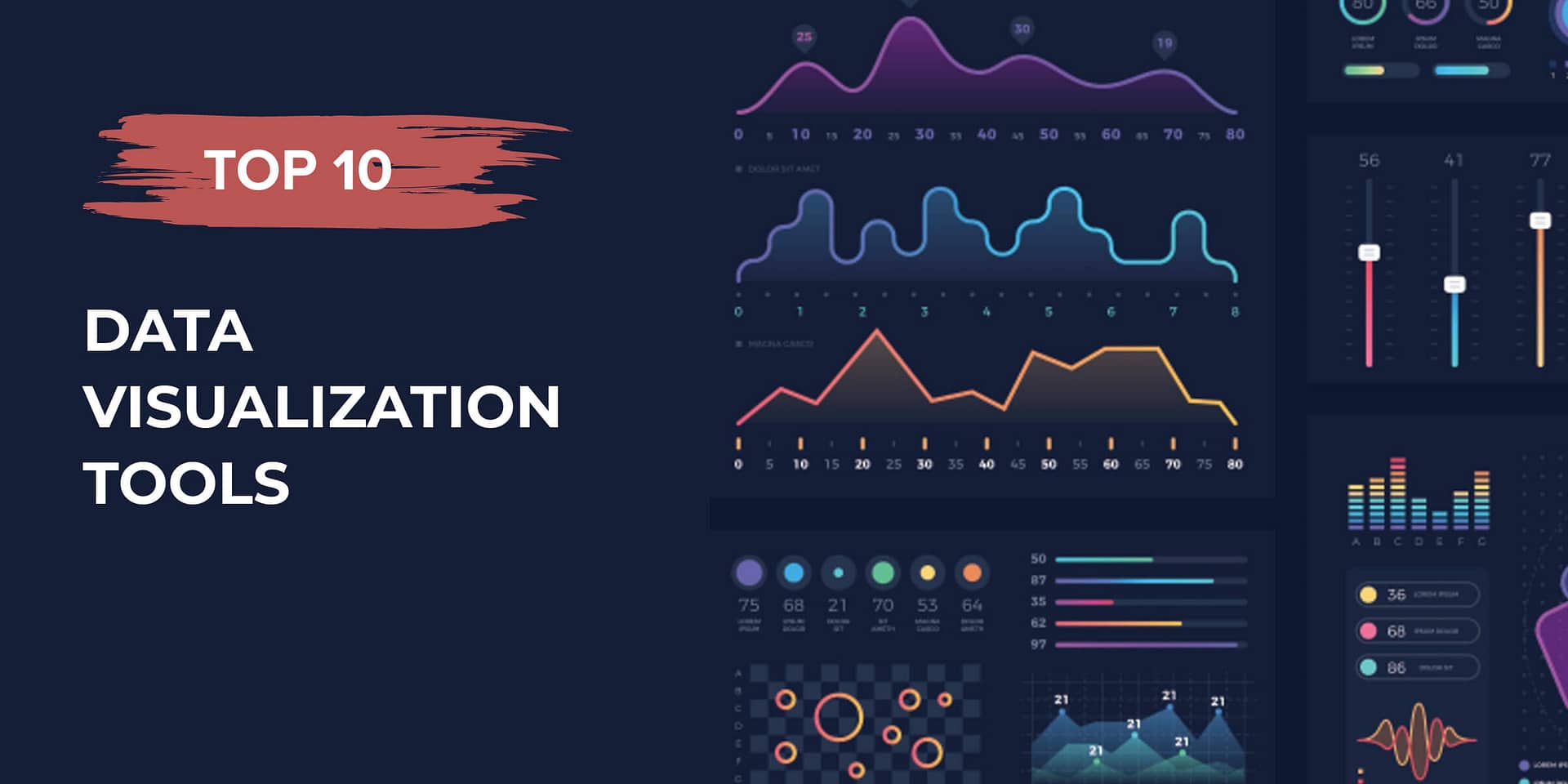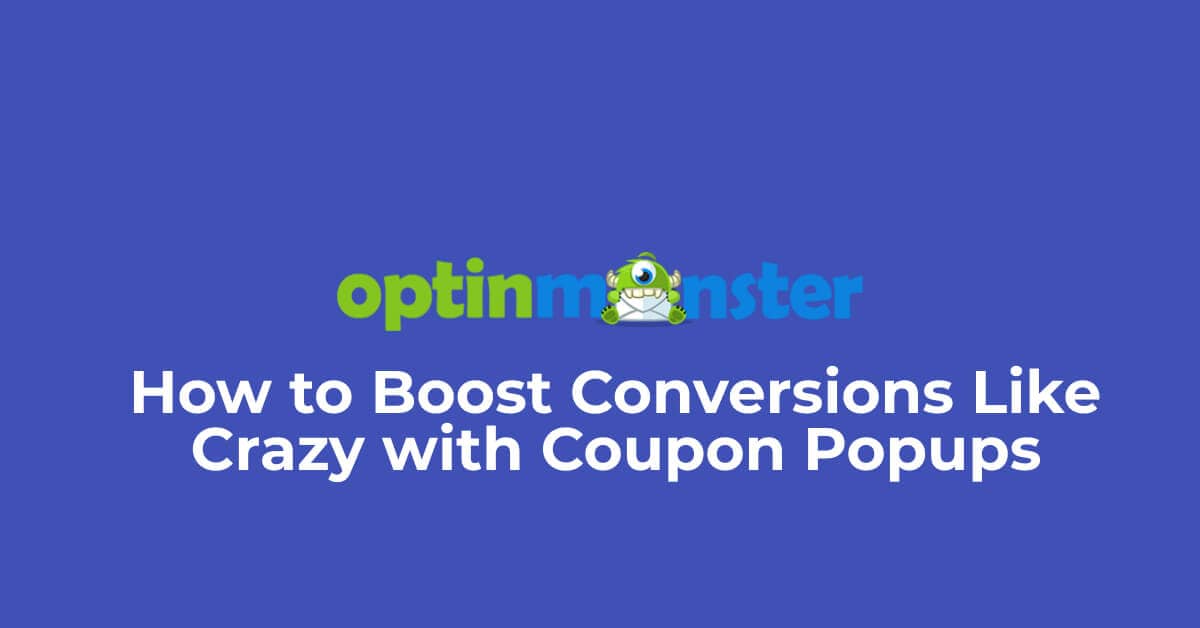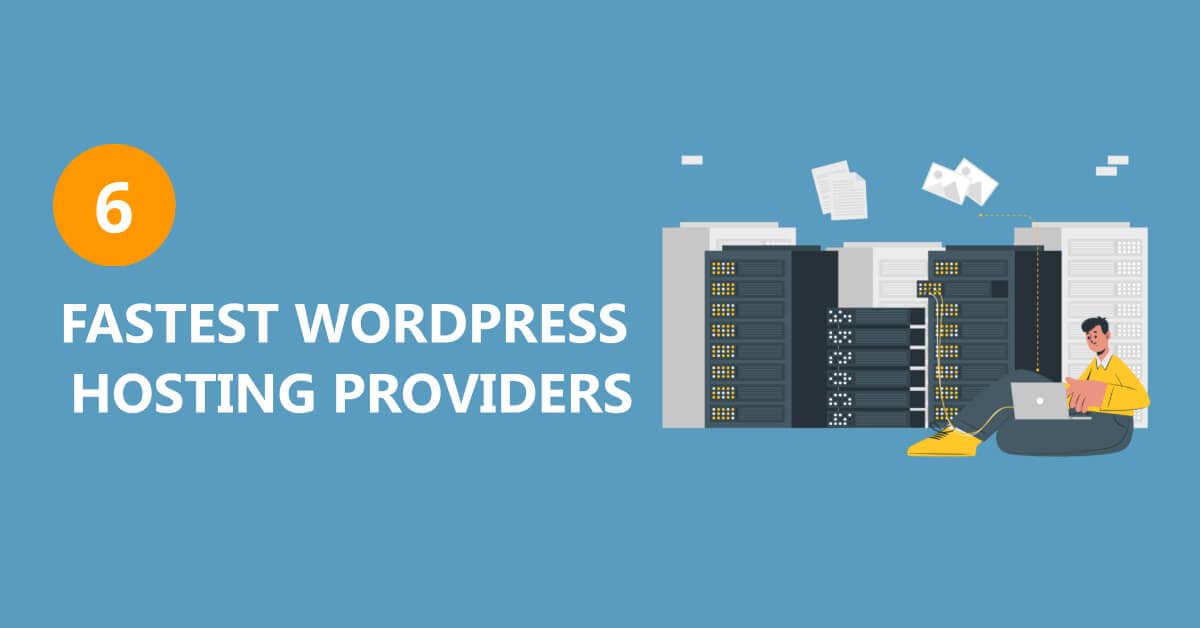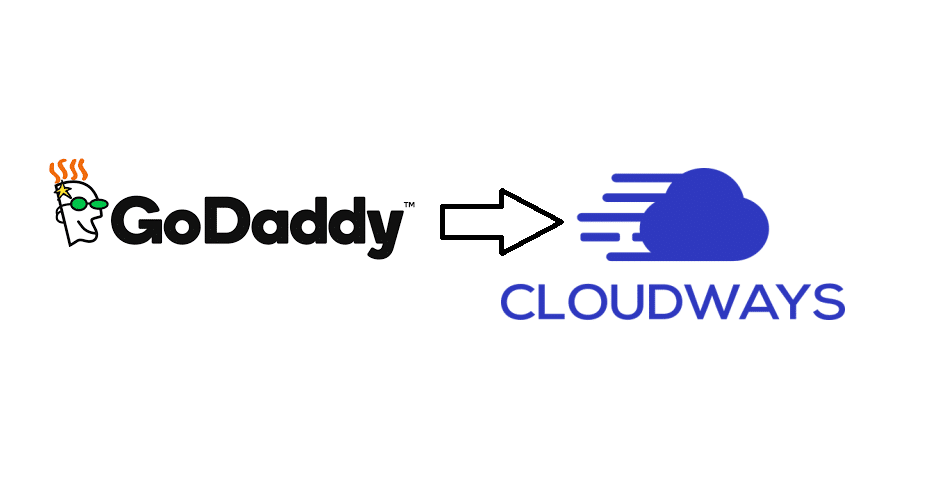Data visualization refers to displaying data in graphical or pictorial form. It aims to present complex information in an easy-to-understand format, making data analysis more efficient and effective.
The importance of data visualization lies in the fact that it can effectively communicate complex data to stakeholders and help them make informed decisions. With so much data being generated today, data visualization has become an essential tool for businesses, organizations, and individuals. The purpose of this overview is to provide an overview of the nine best data visualization tools available in 2023.
An overview provides a brief overview of each tool, its features, benefits, and strengths and weaknesses. Information is presented in a concise and easy-to-understand format, allowing users to easily compare and select the best tools for their needs.
1. Tableau

Tableau is one of the most popular data visualization tools. It is a powerful and versatile tool that can process large amounts of data and transform it into interactive, visually appealing and insightful presentations. Tableau is ideal for businesses of all sizes because it can connect to a wide variety of data sources, including spreadsheets, databases, and cloud services.
Features and Benefits
Tableau has many features and benefits, including:
- Drag-and-drop interface for easy data visualization
- Real-time data updates and automatic chart updates
- Various pre-built visualizations such as bar charts, line charts, maps, etc.
- Advanced analytics and machine learning capabilities
- Interactive dashboards and reports that are easy to share and embed
- Mobile responsive design for accessing data on the go
Pros and Cons
Benefits of Tableau include:
- User-friendly interface for easy data analysis and visualization
- High flexibility and scalability make it suitable for large organizations
- Robust security features and privacy controls
- Extensive 3rd party integrations
- Large and active user community for support and collaboration
However, Tableau also has some drawbacks:
- High cost compared to other data visualization tools
- steep learning curve for some users
- Limited customization of visualizations and dashboards
- Limited built-in data governance and management capabilities.
2. Power BI

PowerBI is a data visualization tool developed by Microsoft. Designed to help businesses easily analyze, visualize, and share data insights. PowerBI provides a range of tools and features to help users create interactive dashboards, reports, and visualizations that can be easily shared and accessed by stakeholders.
Features and Benefits
Some of the key features and benefits of PowerBI include:
- Easy-to-use drag-and-drop interface for data visualization
- Connectivity to a wide range of data sources, including Excel, SQL Server, and more
- Real-time data updates and automatic chart updates
- Advanced data modeling and analysis capabilities
- Collaborative reporting and data sharing with colleagues and stakeholders
- Mobile-responsive design for data access on-the-go
Advantages and Disadvantages
The advantages of PowerBI include:
- Affordable pricing for individuals and small organizations
- Wide range of features and capabilities for data analysis and visualization
- Integration with other Microsoft products, such as Excel and SharePoint
- Easy collaboration and data sharing with stakeholders
However, PowerBI also has a few disadvantages, including:
- Limited customization options for visualizations and dashboards
- Steep learning curve for some users
- Limited data governance and management capabilities
- Limited support for big data and real-time data analysis.
3. QlikView
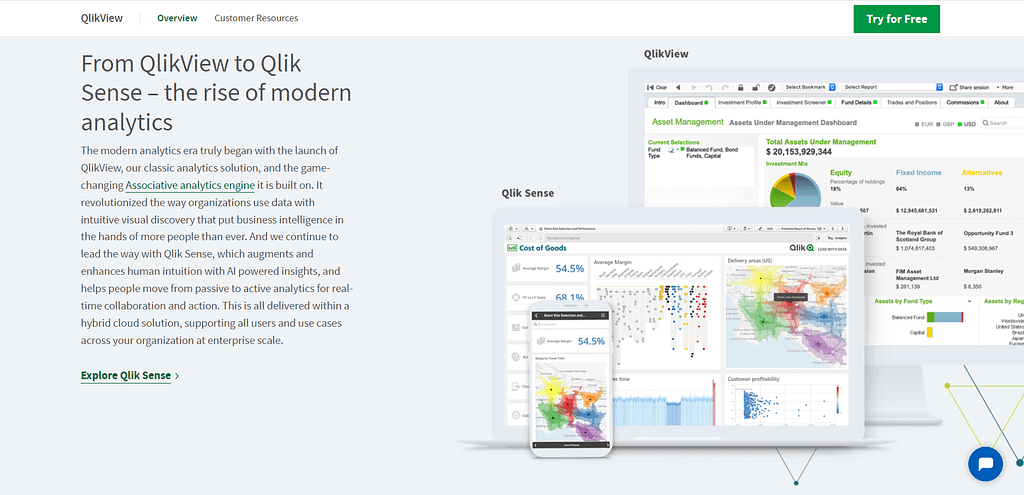
QlikView is a data visualization and business intelligence tool that provides organizations with a powerful platform for data discovery, analysis and reporting. It offers a variety of features that help users easily connect to data sources, create interactive dashboards and visualizations, and share insights with stakeholders.
Features and Benefits
- Some of the key features and benefits of QlikView include:
- Drag-and-drop interface for easy data visualization and analysis
- Connectivity to a wide range of data sources, including spreadsheets, databases, and cloud services
- Advanced analytics and data modeling capabilities
- Real-time data updates and automatic chart updates
- Collaborative reporting and data sharing with colleagues and stakeholders
- Mobile-responsive design for data access on-the-go
Advantages and Disadvantages
The advantages of QlikView include:
- Robust and flexible platform for data analysis and visualization
- Easy-to-use interface for non-technical users
- Integration with a wide range of third-party tools and services
- Affordable pricing options for small organizations
However, QlikView also has a few disadvantages, including:
- Steep learning curve for some users
- Limited customization options for visualizations and dashboards
- Limited support for big data and real-time data analysis
- Higher cost compared to other data visualization tools.
Also Read: How to Start a Blog in 2023
4. Spotfire
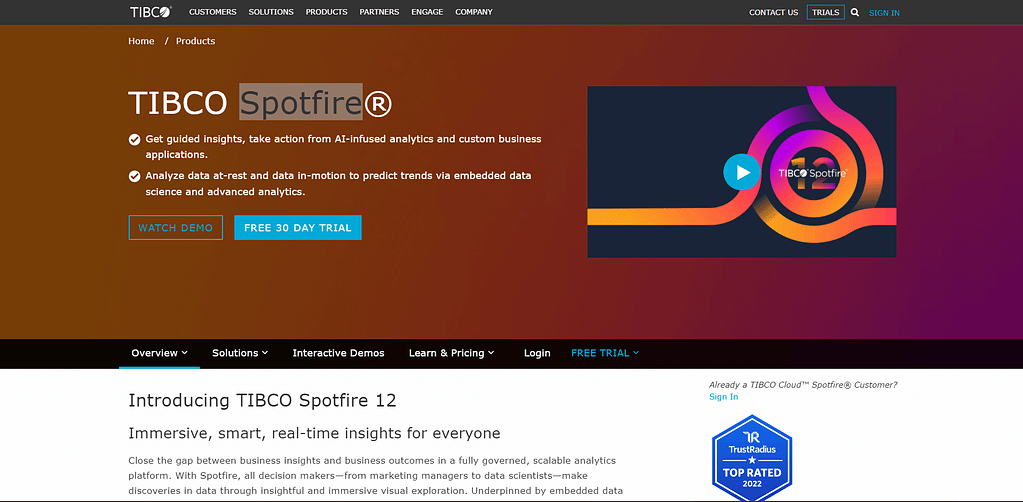
Spotfire is a data visualization and analysis tool developed by TIBCO Software. It provides enterprises with a powerful platform for data discovery, analysis and reporting. Spotfire offers a range of features that enable users to easily connect to data sources, create interactive visualizations and dashboards, and share insights with stakeholders.
Features and Benefits
Here are the main features and benefits of Spotfire:
- Robust data analysis and visualization capabilities
- Advanced analytics and machine learning capabilities
- Drag-and-drop interface for easy data visualization
- Real-time data updates and automatic chart updates
- Collaborative reporting and data exchange with colleagues and stakeholders
- Mobile responsive design for data access on the go
Pros and Cons
The advantages of Spotfire are:
- A flexible and scalable platform for data analysis and visualization
- Integration with various data sources such as spreadsheets, databases, and cloud services
- Advanced analytics and machine learning capabilities
- Affordable option for small organizations
However, Spotfire also has some drawbacks:
- Steep learning curve for some users
- Limited customization options for visualizations and dashboards
- Limited support for big data and real-time data analytics
- High cost compared to other data visualization tools.
5. Highcharts
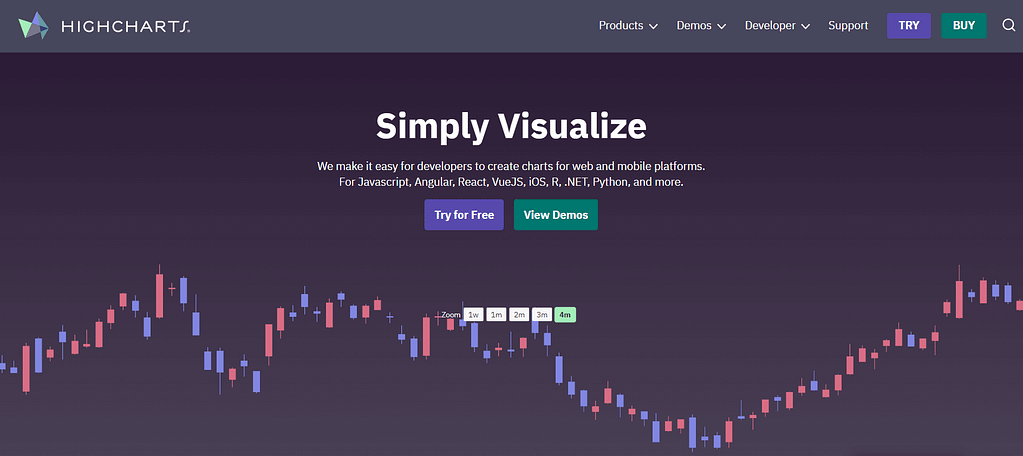
Highcharts is a popular JavaScript-based data visualization library that provides developers and organizations with powerful tools for creating interactive charts, graphs, and other types of data visualization. Supporting a wide variety of chart types, Highcharts provides a flexible and customizable platform for data visualization.
Features and Benefits
Some of the key features and benefits of Highcharts include:
- Wide range of chart types, including bar charts, line charts, scatter plots, and more
- Advanced customization options for chart elements, such as colors, labels, and tooltips
- Mobile-responsive design for data access on-the-go
- Integration with a wide range of data sources, including spreadsheets, databases, and cloud services
- Robust performance and scalability for large datasets
Advantages and Disadvantages
The advantages of Highcharts include:
- Open-source and free to use
- Wide range of chart types and customization options
- Fast and efficient performance for large datasets
- Support for a wide range of programming languages and platforms
However, Highcharts also has a few disadvantages, including
- Steep learning curve for non-technical users
- Limited capabilities for advanced data analysis and visualization
- Dependence on JavaScript and web technologies
- Limited collaboration and data sharing features compared to other data visualization tools.
6. D3.js
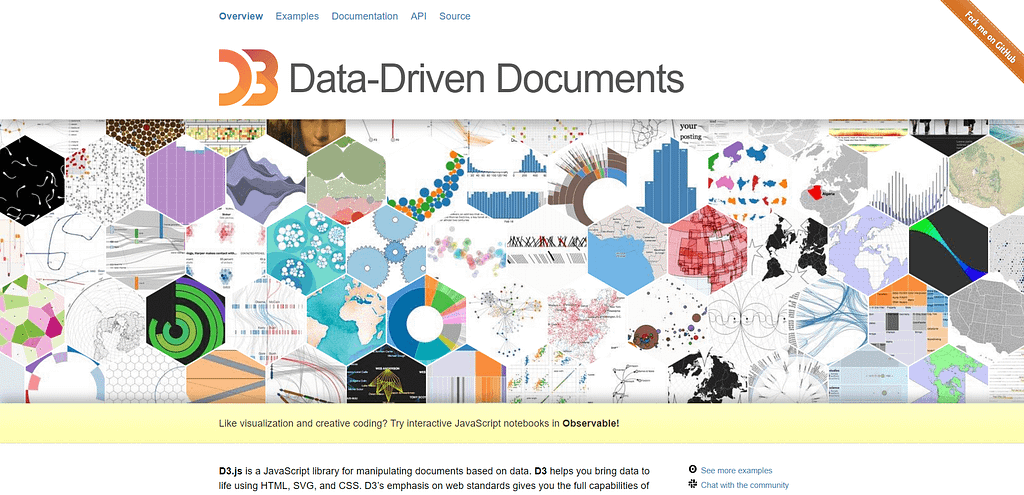
D3.js (Data-Driven Documents) is an open-source JavaScript library for creating dynamic and interactive data visualizations in web browsers. D3.js is designed for web developers and provides a powerful and flexible platform for data visualization and manipulation.
Features and Benefits
Some of the key features and benefits of D3.js include:
- Dynamic and interactive data visualization
- Advanced data manipulation and transformation capabilities
- Support for a wide range of chart types and visualization styles
- Flexible customization options for chart elements and interactions
- Integration with a wide range of data sources, including spreadsheets, databases, and cloud services
Advantages and Disadvantages
- The advantages of D3.js include:
- Open-source and free to use
- Flexible and scalable platform for data visualization and manipulation
- Advanced customization options for chart elements and interactions
- Integration with a wide range of data sources, including spreadsheets, databases, and cloud services
However, D3.js also has a few disadvantages, including:
- Steep learning curve for non-technical users
- Dependence on JavaScript and web technologies
- Limited collaboration and data sharing features compared to other data visualization tools
- Limited capabilities for advanced data analysis and visualization.
7. Plotly
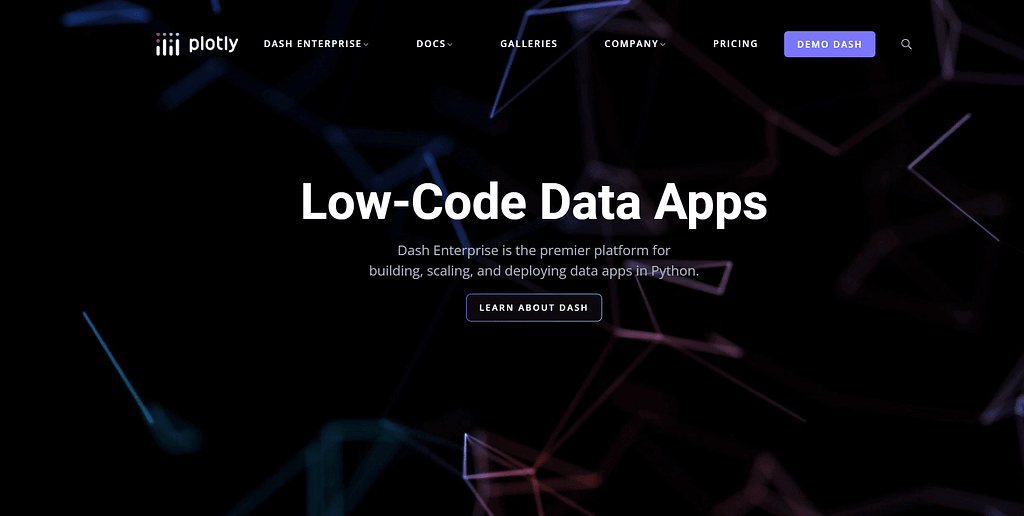
Plotly is a popular open source data visualization library that provides developers and organizations with a powerful platform for creating interactive charts, graphs, and other types of data visualization. Designed for both technical and non-technical users, Plotly provides an intuitive and easy-to-use interface for data visualization.
Features and Benefits
- Plotly’s main features and benefits are:
- Intuitive and easy-to-use data visualization interface
- Support for various chart types and visualization styles
- Advanced customization options for chart elements and interactions
- Mobile responsive design for data access on the go
- Collaboration and data sharing capabilities for teams and organizations
Pros and Cons
The advantages of Plotly are:
- Open source and free to use
- Intuitive and easy-to-use data visualization interface
- Support for various chart types and visualization styles
- Advanced customization options for chart elements and interactions
- Collaboration and data sharing capabilities for teams and organizations
However, Plotly also has some drawbacks:
- Dependence on JavaScript and web technologies
- Limited opportunities for advanced data analysis and manipulation
- Subscription-based pricing for advanced features and support
- Limited integration with specific data sources and platforms.
8. Infogram
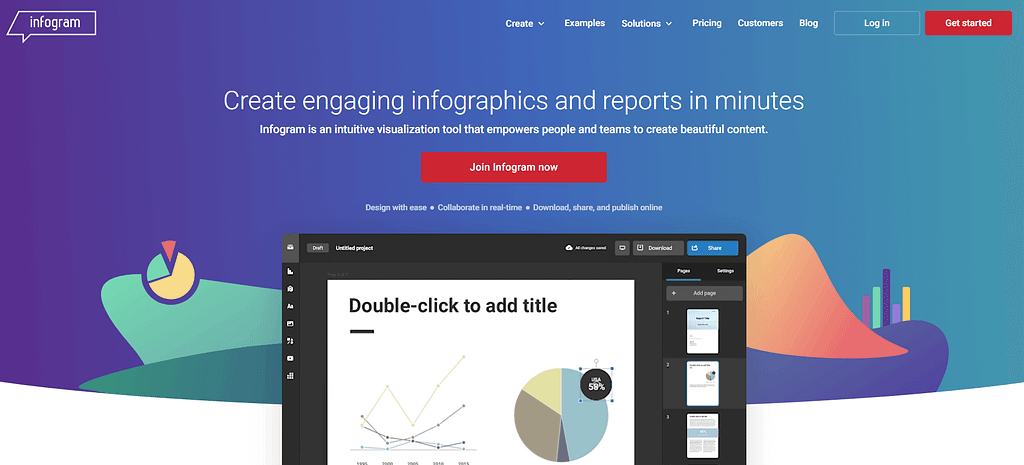
Infogram is a cloud-based data visualization platform that provides users with an easy-to-use interface for creating interactive charts, graphs, and other types of data visualization. Designed for both technical and non-technical users, Infogram offers a wide range of templates, themes, and customization options to help users create visually appealing data visualizations.
Features and Benefits
Some of the key features and benefits of Infogram include:
- Easy-to-use interface for data visualization
- Wide range of templates, themes, and customization options
- Advanced collaboration and data sharing features for teams and organizations
- Integration with a wide range of data sources, including spreadsheets, databases, and cloud services
- Mobile-responsive design for data access on-the-go
Advantages and Disadvantages
The advantages of Infogram include:
- User-friendly and intuitive interface for data visualization
- Wide range of templates, themes, and customization options
- Advanced collaboration and data sharing features for teams and organizations
- Integration with a wide range of data sources, including spreadsheets, databases, and cloud services
However, Infogram also has a few disadvantages, including:
- Subscription-based pricing for advanced features and support
- Limited customization options for chart elements and interactions
- Dependence on cloud-based services for data access and management
- Limited capabilities for advanced data analysis and manipulation.
9. ChartBlocks
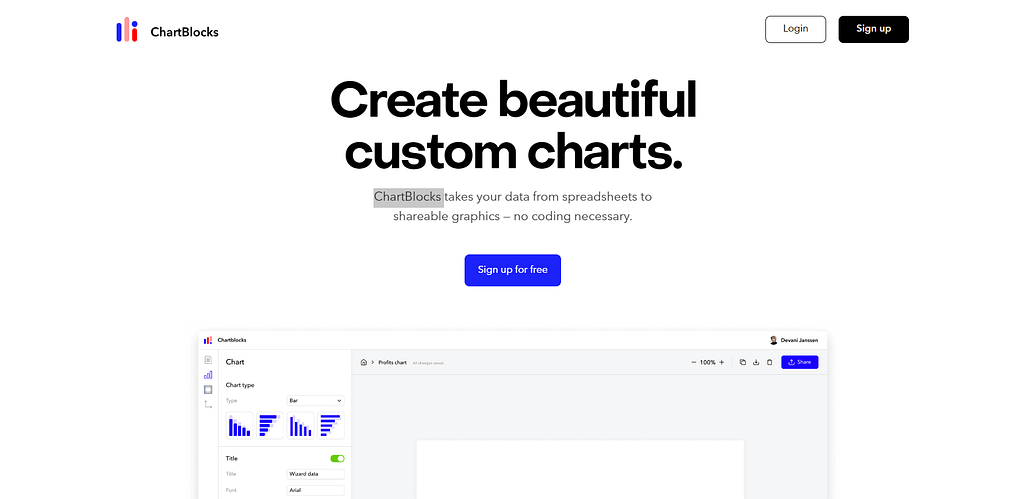
ChartBlocks is a cloud-primarily based totally records visualization device that permits customers to quick and without problems create custom charts, graphs, and dashboards. With its drag-and-drop interface and pre-constructed templates, ChartBlocks is designed for non-technical customers who want to create professional-searching records visualizations without having specialised technical skills.
Features and Benefits
Some of the important thing capabilities and blessings of ChartBlocks include:
- Drag-and-drop interface for smooth records visualization introduction
- Pre-constructed templates and issues for immediate visualizations
- Integration with a extensive variety of records sources, together with spreadsheets, databases, and cloud offerings
- Advanced collaboration and records sharing capabilities for groups and agencies
- Mobile-responsive layout for records get right of entry to on-the-move
Advantages and Disadvantages
The benefits of ChartBlocks include:
- User-pleasant and intuitive interface for records visualization
- Pre-constructed templates and issues for immediate visualizations
- Integration with a extensive variety of records sources, together with spreadsheets, databases, and cloud offerings
- Advanced collaboration and records sharing capabilities for groups and agencies
However, ChartBlocks additionally has some disadvantages, together with:
- Limited customization alternatives for chart factors and interactions
- Dependence on cloud-primarily based totally offerings for records get right of entry to and control
- Subscription-primarily based totally pricing for superior capabilities and aid
- Limited skills for superior records evaluation and manipulation.
Conclusion
Data visualization is a critical tool for effectively communicating complex information and insights from data. In this overview, we’ve reviewed the best nine data visualization tools available in 2023, including Tableau, PowerBI, QlikView, Spotfire, Highcharts, D3.js, Plotly and Infogram. Each of these tools offers unique features and benefits tailored to different user types and use cases.
Final Thoughts
Data visualization is a rapidly evolving field, and the tools and technologies available are constantly improving. When choosing a data visualization tool, it’s important to consider your specific needs and goals. B. What kind of data you use, what kind of visualizations you need to create, and the level of customization and control you need.
Recommendations
Finally, we recommend evaluating some of the best data visualization tools to determine which one best suits your needs. Consider factors such as the type of data you use, the types of visualizations you need to create, the level of customization and control you need, and the level of assistance you need. Once you’ve decided on a tool, you should invest time and resources into understanding how to get the most out of it.
FAQs
What is a data visualization tool?
Data visualization tools are software that allow users to create visual representations of data such as charts, graphs, and dashboards. These tools help communicate complex information and insights in a clear, concise, and easy-to-understand manner.
Why data visualization is important?
Data visualization is important to help users quickly and easily understand patterns, trends, and relationships in data. By transforming raw data into visually appealing and digestible information, data visualization helps communicate insights and insights more effectively.
What types of data can be visualized with data visualization tools?
You can use data visualization tools to visualize a variety of data types, including numeric, categorical, temporal, and geospatial. Some tools can also visualize more complex data structures such as network data and multivariate data.
What are some popular data visualization tools?
The most popular data visualization tools include Tableau, PowerBI, QlikView, Spotfire, Highcharts, D3.js, Plotly and Infogram.
What should I consider when choosing a data visualization tool?
When choosing a data visualization tool, consider factors such as the type of data you work with, the type of visualization you need to create, the level of customization and control you need, and the level of support you need. Factors such as tool cost, ease of use, and compatibility with existing data management and analysis tools should also be considered.
Is data visualization only for technical users?
No, data visualization isn’t just for technical users. Many data visualization tools are designed for non-technical users, offering drag-and-drop interfaces, pre-built templates, and other user-friendly features. However, advanced users who want more customization and advanced data analysis capabilities may prefer a more technical data visualization tool.
Are there free data visualization tools?
Yes, there are some free data visualization tools like D3.js, Plotly, Highcharts. However, these tools may have limited functionality and may require more advanced technical skills. Other data visualization tools may offer a free version with limited functionality or a free trial that allows users to test the tool before choosing a paid subscription.

